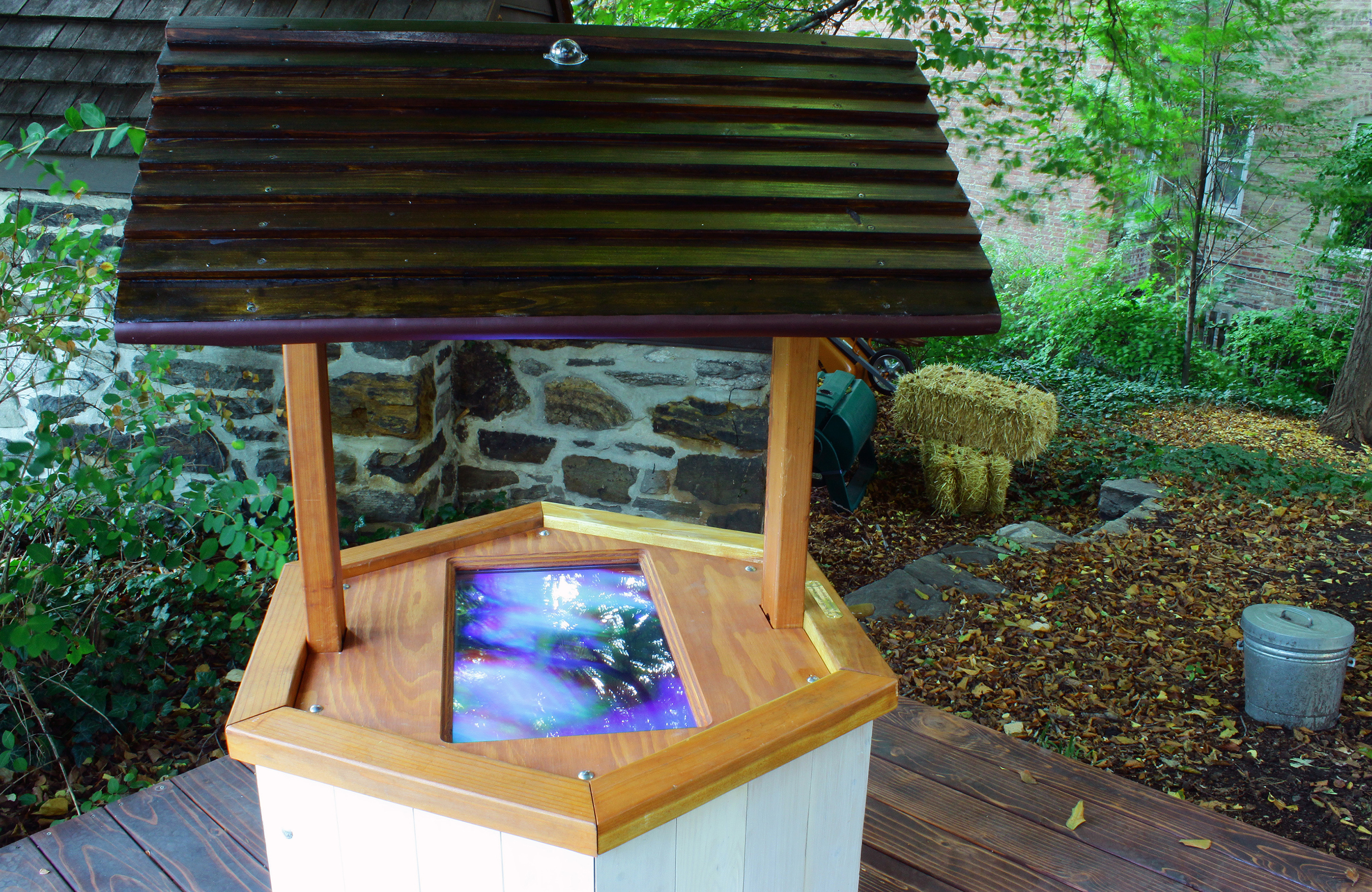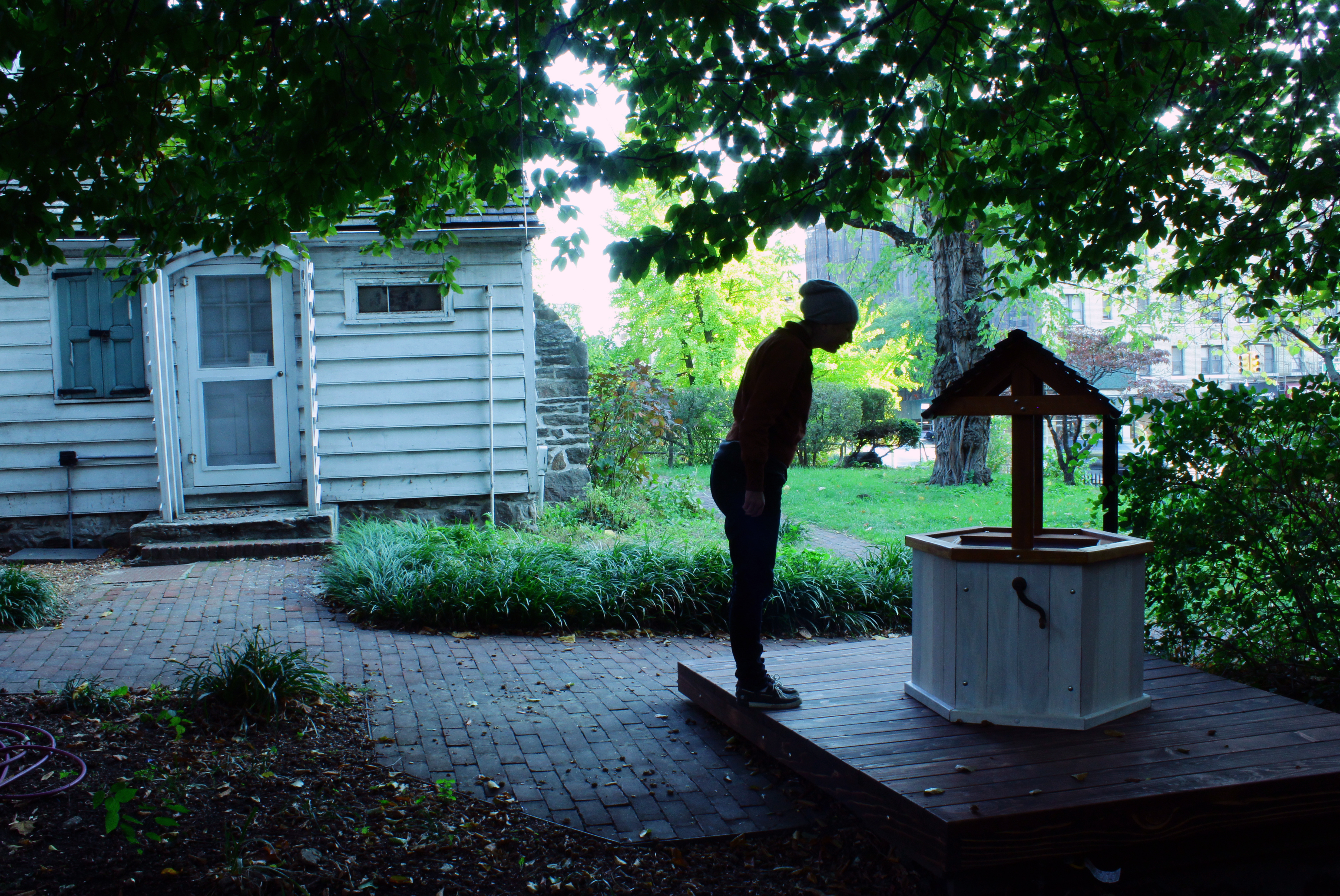Deep Focus
Why Wishes Matter

Amanda Long. Wishing Well, 2016. Interactive video sculpture installed at site of the original well in the back yard of the farmhouse. Dyckman Farmhouse Museum, New York. © Amanda Long.
Wishes are typically made in silence and kept in the privacy of one’s mind: a unique moment, when one believes in a future that may be possible. This act of faith is embodied in my work, Wishing Well, which allows each participant to record a wish in a public space, in effect sending a digital message in a bottle to the seas of the internet. Through the Arts in the Park program and the Historic House Trust’s Contemporary Art Partnerships Program, this interactive video sculpture has been collecting anonymous audio wishes since November 2016 at the Dyckman Farmhouse Museum in Manhattan.
What do people wish for, and what does this reveal about our culture? In their recordings, people are worried about the nation’s political and economic situation and about their health. One woman says, “We wish our country would be more inclusive and loving towards each other.” Another voice says, “I wish for people to be nice to each other and to figure things out in this country.” “I wish that people would be happier,” says another. The sight of the Dyckman’s traditional farmhouse and land makes visitors aware of the home they want and wish for: “I wish we had a new house. (laughter)”
The voices are all distinctive, yet threads of commonality are clear. In the past six months in New York City, certain themes have emerged. I’ve separated the wishes into categories: dreams, politics, health, the economy, love, and humor. Many are in Spanish, French, Hebrew, Chinese, and other languages from around the world; some are even sung.
Wishing Well creates an archive of the dreams, concerns, and humor of local people. Many of the wishes contain a story: “I wish Donald Trump to quit the job. I don’t want him as the President”; “I wish I could be healthy for the next twenty years or however long I live”; “I wish for world equality”; “My wish is for reason, compassion, and sanity to rule all decisions made by all people.”

Amanda Long. Wishing Well with Dyckman Farmhouse in background, 2016. Interactive video sculpture installed at site of the original well in the back yard of the farmhouse. Dyckman Farmhouse Museum, New York. © Amanda Long.
The automated work has become, in effect, an oral documentary of visitors to the historic site, the last existing farmhouse in Manhattan. Since the work presents no recording crew or obvious technology, participants anthropomorphize the well, addressing it directly. Children repeatedly visit the well, asking for magical powers or good grades, tapping on its surface and expecting an immediate answer: “I wished I passed 5th grade!”; “I wish that I would get my grandmother back!” Adults sometimes come alone to turn the crank of the well and wish for a job promotion. In a quiet voice, a woman wishes for a baby. Meanwhile the background sounds offer the context of the street, layered with wildlife cloistered among the farm’s gardens. The static mystery of Wishing Well attracts personal aspirations (a man asks that his business of flipping houses will bring him financial gain) as well as universal hopes for political progress and fears of economic uncertainty (many wish for unity, peace, and a world with more respect and love).
Amanda Long. Audio recordings generated by the Wishing Well visitors, 2016-2017. Interactive video sculpture. Dyckman Farmhouse Museum, New York. © Amanda Long.
Expressed in the wishes is much love, laughter, and hope. This is significant: the ability to wish indicates the freedom to follow one’s dreams. It is a human right. The ability to dream provides strength for each American to stand up for herself or himself in the present and future of this country. In contrast, in the film HyperNormalisation by Adam Curtis, a cleaning woman interviewed in the Soviet Union is asked what she dreams or wishes for. As she scrubs, she explains to the interviewer: “I don’t wish for anything. I don’t believe in anything, not even you.”
Wishing Well is an artwork that gives people a space in which to dream. Despite being downtrodden by financial and political turmoil and anxiety, the human spirit has not been extinguished. Prompting people to wish and to dream is essential in the face of authoritarian regimes and is inherent to our democracy. It is my motivation for making the Wishing Well: to collect and amplify the visitors’ voices, for a vision of a better, kinder future.
